Solar Installers Baildon
Find top Solar Panels For Homes in Baildon
Receive 3 FREE Solar Companies quotes for your project today! Compare profiles, reviews, accreditations, portfolio, etc... and choose the best deal.

Pro-Fit Electrical Services Ltd
Bradford, GBWelcome to Pro-Fit Electrical Services, a family run business with over 25 years of experience. We offer a variety of services from Mvhr Systems and a full range of Ventilation, Electric Vehicle Charging pods and a whole range of Electrical Services. Our electricians form a very experienced workforce in many different fields. We believe in providing unbeatable service at a very reasonable cost. To find out more, why not give us a call? We are fully qualified and insured with over 15 years of combined experience. Our services cover all areas within the Electrical, Ducting and EV charging sectors.
- Services
- Why Us?
- Gallery
Get Quote
JBA Energy
1 Broughton Park, Old Lane North, Broughton, Skipton, BD23 3FD, GBJBA Consulting is part of the JBA family of environmental, engineering and risk management companies. Committed to exceptional client service and to helping improve the environment, business and infrastructure for the benefit of all. We work collaboratively across our disciplines combining analytical, engineering, social and nature-inspired solutions. Supporting our clients to adapt and build resilience to climate change both in the UK and worldwide.
- Services
- Why Us?
- Accreditations
- Gallery
Get Quote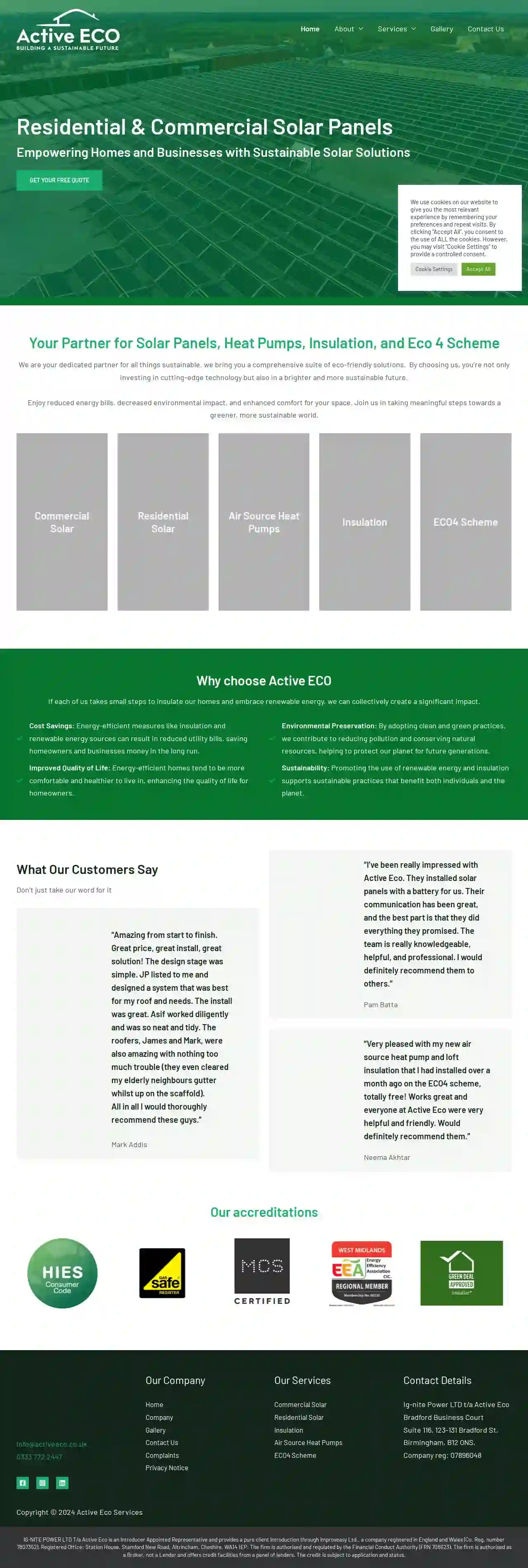
Active Eco
519 reviewsSuite 116, 123-131 Bradford St, Bradford Business Court, Birmingham, B12 0NS, GBEmpowering Homes and Businesses with Sustainable Solar Solutions. We are your dedicated partner for all things sustainable. We bring you a comprehensive suite of eco-friendly solutions. By choosing us, you’re not only investing in cutting-edge technology but also in a brighter and more sustainable future. Enjoy reduced energy bills, decreased environmental impact, and enhanced comfort for your space. Join us in taking meaningful steps towards a greener, more sustainable world.
- Services
- Why Us?
- Accreditations
- Our Team
- Testimonials
- Gallery
Get Quote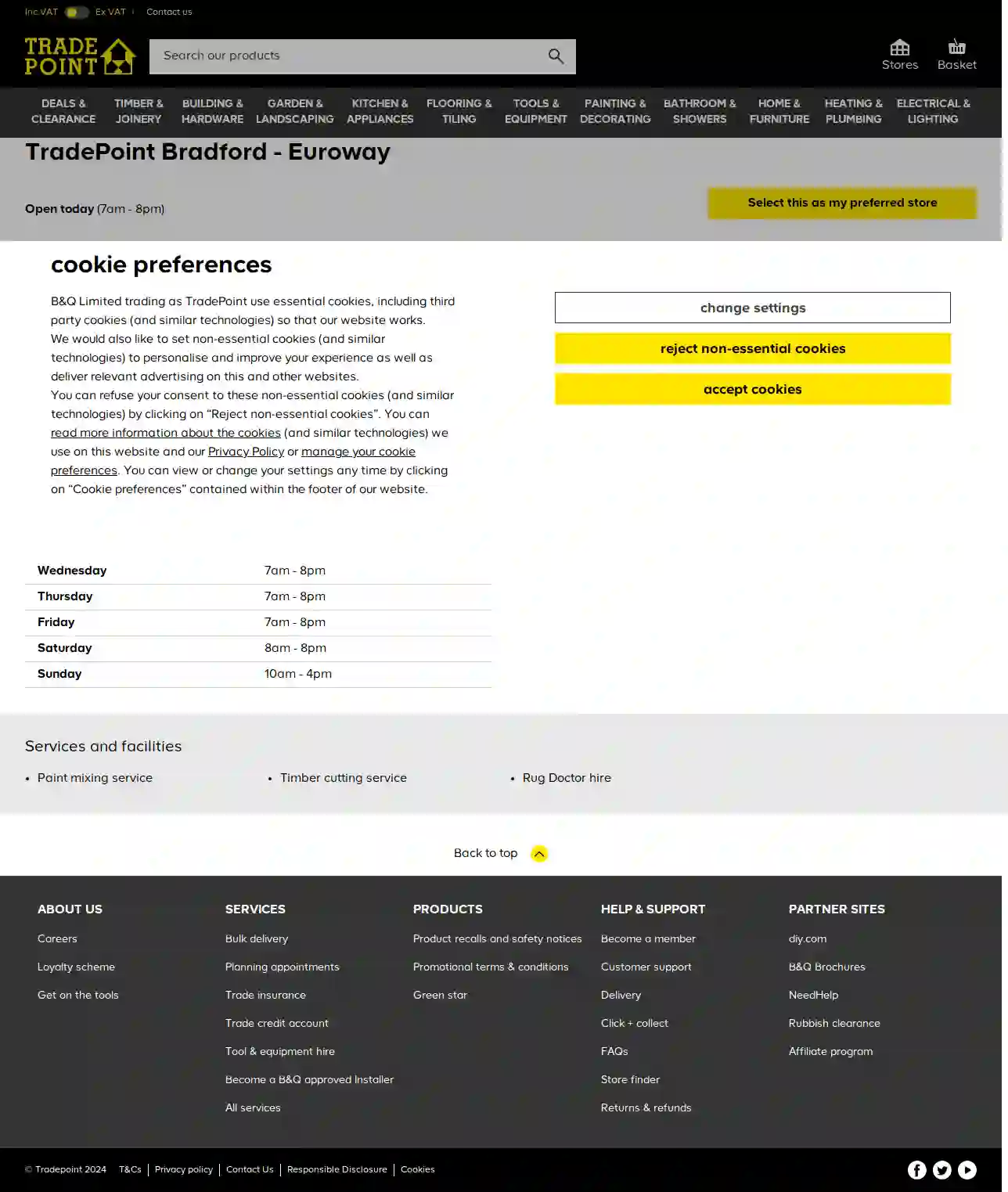
TradePoint Bradford - Euroway
Bradford, GBBeat the heat with our range of fans available with 1+ hour click and collect and home delivery. Shop now!
- Services
- Why Us?
- Gallery
Get Quote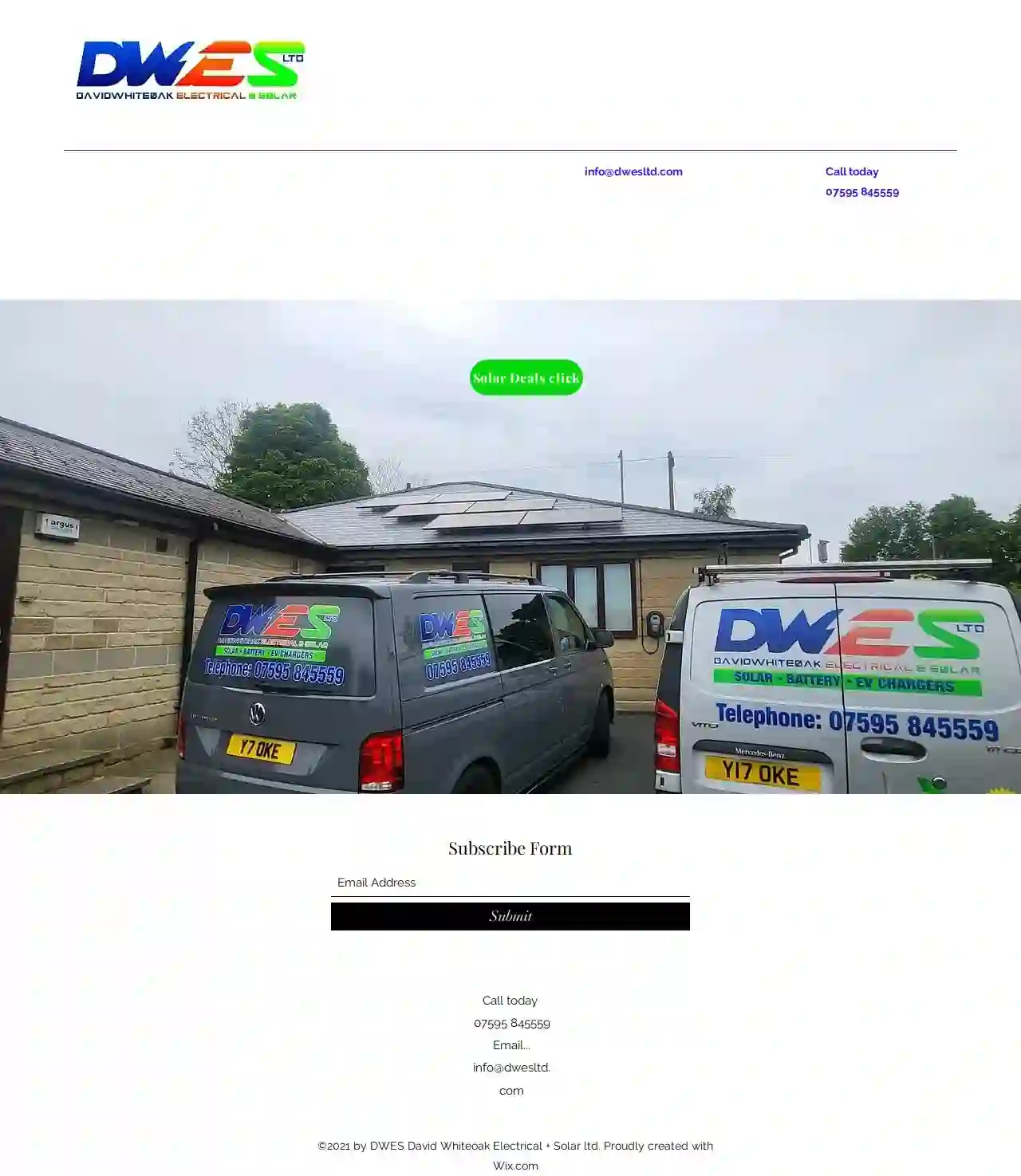
David Whiteoak Electrical + Solar ltd
54 reviewsBradford, GBAt DWES David Whiteoak Electrical + Solar Ltd, we pride ourselves on providing top-notch electrical and solar solutions to our customers. With a focus on safety, quality, and customer satisfaction, we strive to deliver exceptional results. Our team of experts is dedicated to ensuring that every project is completed to the highest standards. Whether you need a simple electrical installation or a comprehensive solar solution, we've got you covered. Contact us today to learn more about our services and how we can help you achieve your goals.
- Services
- Why Us?
- Gallery
Get Quote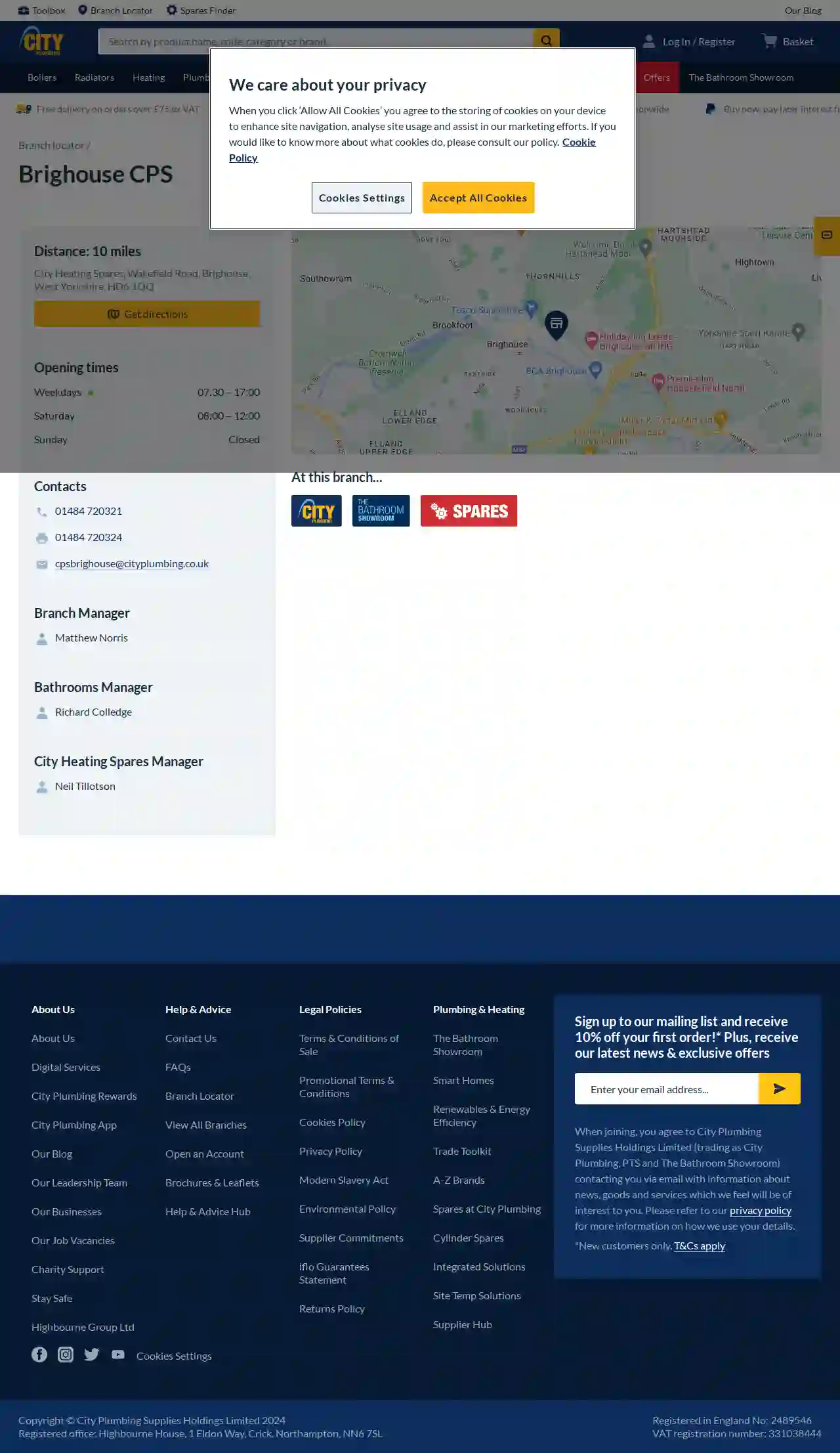
City Plumbing
3.98 reviewscity heating spares, wakefield road, Brighouse, HD6 1QQ, GBCity Plumbing are your trusted plumbing and heating suppliers for the trade. Whether you’re fitting a new boiler, radiator or full bathroom suite, we’ve got all the tools you need to get the job done. From electricals to plumbers’ supplies and much, much more – we stock all the top brands at affordable trade prices. When you’re on a job, time is money. That’s why we stock a wide range of essential products. From copper tubing to towel rails, we’ll make sure you get the plumbing supplies you need within a day or so. As award-winning plumbers’ merchants and specialist distributors, we’ve got over 350 branches across the UK and have been serving our loyal customers for over 40 years. As such, we offer next-day delivery and click & collect options to suit you – because nobody likes to be kept waiting. For the best quality plumbing supplies from reputable manufacturers, find your local branch or get in touch with our team. If you’d like a little more inspiration, come on down to our bathroom showrooms. Our specialist team is always on hand to offer professional advice to assist you with your next project.
- Services
- Why Us?
- Accreditations
- Our Team
- Gallery
Get Quote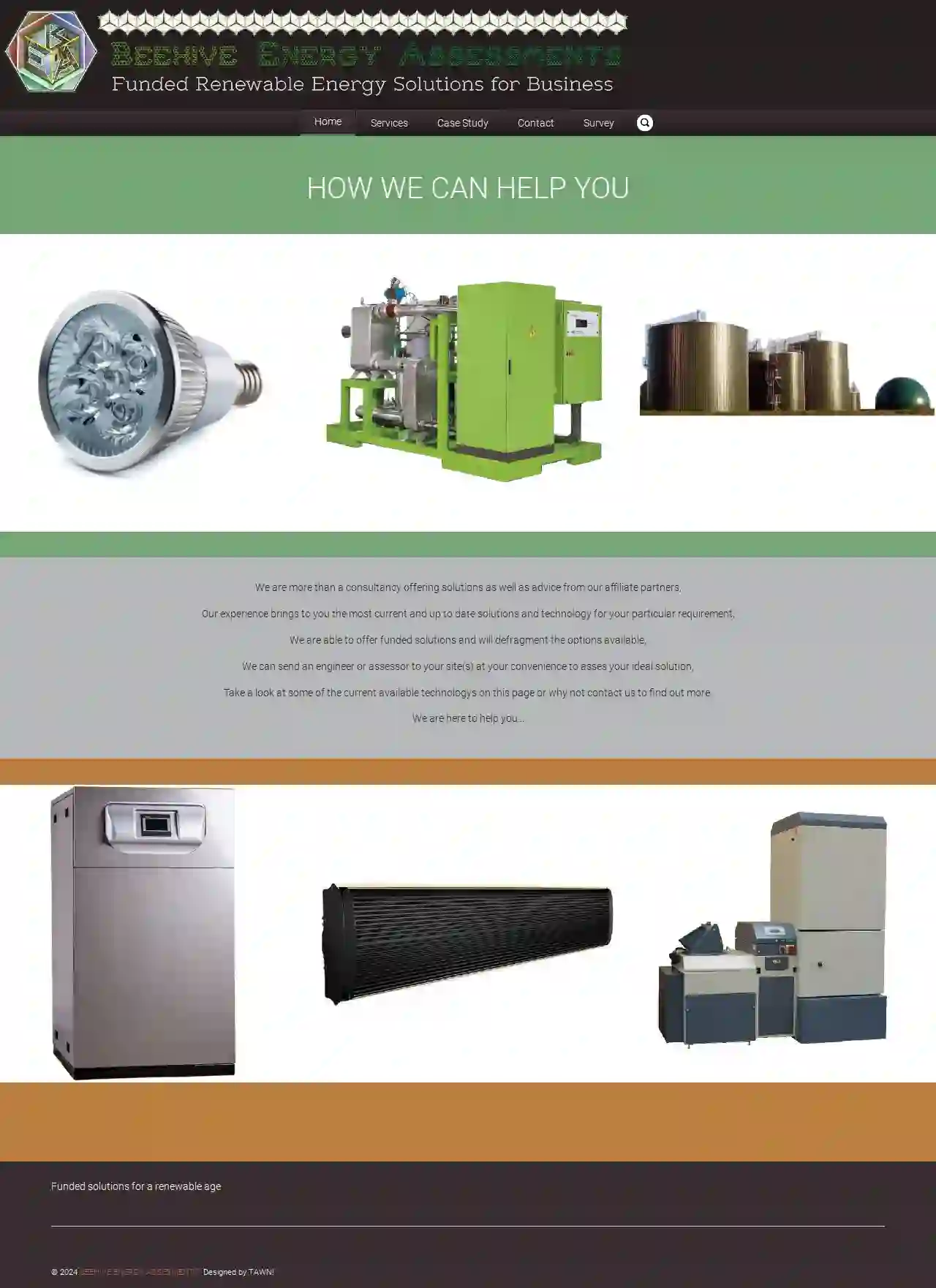
Beehive Energy Assesments
Enterprise House, Timbrell Street, Trowbridge, BA14 8PL, GBBeehive Energy Ltd. is a consultancy that offers advice on solutions technology and funding for energy saving and renewable energy. With over [insert experience] years of experience, we bring to you the most current and up-to-date solutions and technology for your particular requirement. We are able to offer funded solutions and will defragment the options available. Our team of experts can send an engineer or assessor to your site(s) at your convenience to assess your ideal solution. We are here to help you... save energy, reduce carbon emissions, and earn government incentives.
- Services
- Why Us?
- Gallery
Get Quote
Eco Partners
4.940 reviewsFuture Fields, Bradford, Unit 2 Royds Enterprise Park, BD6 3EW, GBEco Partners is a leading renewable energy company based in West Yorkshire, dedicated to providing sustainable energy solutions that benefit both the environment and your energy costs. We specialize in a range of services, including air source heat pumps, solar PV systems, battery storage solutions, and electric vehicle charging points. Our commitment to innovation ensures you receive the most advanced and efficient solutions available. At Eco Partners, we are passionate about sustainability and providing top-notch service. We tailor our solutions to meet your unique energy needs, helping you reduce your carbon footprint and save on energy bills. Bobby Chand and Julian Haddock, the co-founders and directors, are committed to providing an honest, reliable, and professional service to all clients. They aim to assess homes and businesses individually, educating them on how to reduce their carbon footprint and energy costs for years to come.
- Services
- Why Us?
- Accreditations
- Our Team
- Testimonials
- Gallery
Get Quote
DFS Solar (Dual Fuel Solutions)
4.220 reviewsC3 Jackson Street, Bolton, BL4 9HB, GBWelcome to Dual Fuel Solutions, a leading provider of solar energy solutions. With over 30 years of experience, we are committed to delivering excellent service and helping our customers switch to solar energy. Our team of experts will work with you to design, supply, and install a bespoke solar panel system that meets your specific needs and budget. We offer a range of solar panel systems, including solar PV kits and full solar PV and energy storage systems. Our systems are designed to be efficient, reliable, and cost-effective, and we offer a range of financing options to make it easy for you to get started. At Dual Fuel Solutions, we are proud of our accreditations and certifications, including MCS certification, TrustMark, and HIES Consumer Protection. We are committed to providing our customers with the best possible service and ensuring that their solar energy systems are installed to the highest standards.
- Services
- Why Us?
- Accreditations
- Gallery
Get Quote
Sonic Direct
4.2928 reviewsSonic Direct, Ingleby Road, Bradford, BD8 9AN, GBSonic Direct is a leading online retailer of home appliances and electronics. With a wide range of products from top brands, we offer competitive prices, excellent customer service, and a hassle-free shopping experience. Our mission is to provide our customers with the best possible service, ensuring they receive the right product at the right price. We are committed to delivering exceptional customer service, and our team is always available to help with any queries or concerns. With our extensive product range, competitive pricing, and excellent customer service, Sonic Direct is the perfect destination for all your home appliance and electronics needs.
- Services
- Why Us?
- Accreditations
- Gallery
Get Quote
Over 3,485+ Solar Companies onboarded
Our solar experts operate in Baildon and beyond!
SolarCompaniesHub has curated and vetted the Best Solar Companies in and around Baildon. Find a reliable pro today.
Frequently Asked Questions About Solar Installers
- System size (measured in kilowatts, or kW)
- Type of solar panels (monocrystalline, polycrystalline, thin-film)
- Roof complexity (pitch, size, obstructions)
- Labor costs in your area
- Available incentives and rebates
- Analyze your energy bills
- Assess your roof's suitability
- Calculate your potential solar energy generation
- Recommend a system size that meets your needs and goals.
What is net metering, and how does it work?
What is the average cost of solar panel installation in UK?
How do I choose the right solar panel system size for my needs?
What happens if my roof needs to be replaced after I install solar panels?
What is net metering, and how does it work?
What is the average cost of solar panel installation in UK?
- System size (measured in kilowatts, or kW)
- Type of solar panels (monocrystalline, polycrystalline, thin-film)
- Roof complexity (pitch, size, obstructions)
- Labor costs in your area
- Available incentives and rebates
How do I choose the right solar panel system size for my needs?
- Analyze your energy bills
- Assess your roof's suitability
- Calculate your potential solar energy generation
- Recommend a system size that meets your needs and goals.